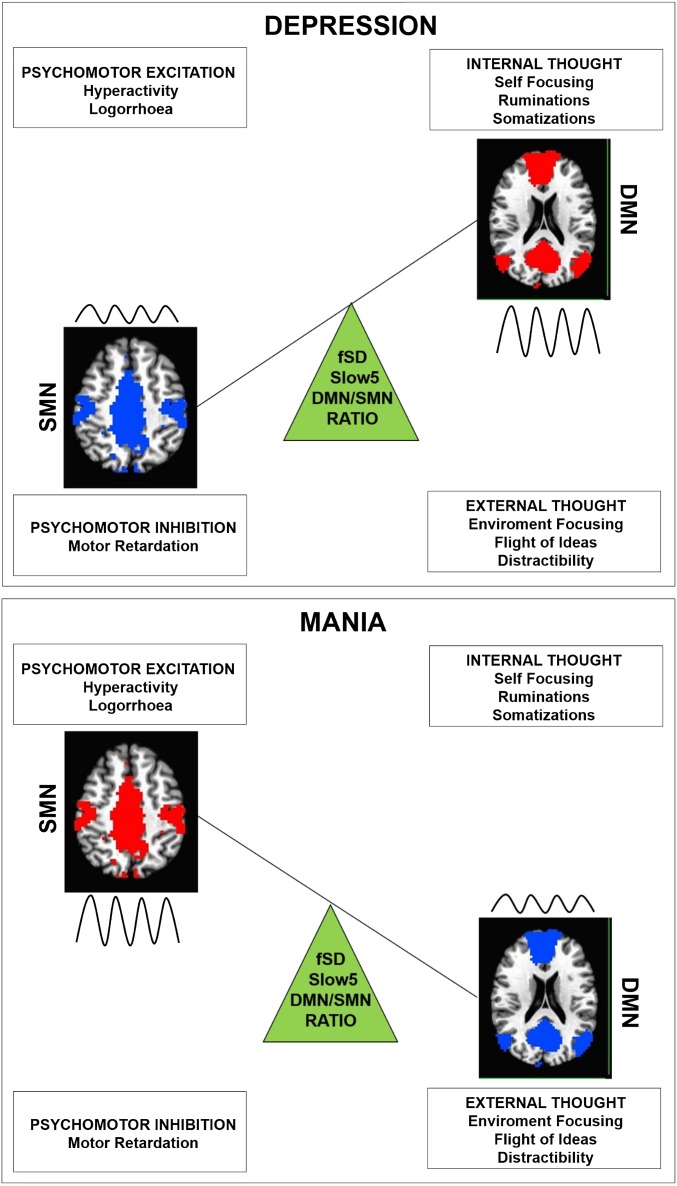Fig. 4.
Schema of DMN/SMN disbalance in depression and mania. The changes in the fSD of the DMN/SMN ratio in Slow5 (green triangle). The model represents the hypothetical relationship between changes in DMN/SMN balance and the most typical clinical presentation of BD depression and mania. Changes of the relative weight of the lower frequency Slow5 band (wave) could affect the balance between different resting-state networks, in the various phases of BD. In depression, the increase of the ratio could tilt the network disbalance toward the DMN (red and higher amplitude of the wave) at the expense of the SMN (blue and lower amplitude of the wave), which may lead to internal thought (focused on internal contents at the expense of the external contents) and psychomotor inhibition. In mania, the decrease of the ratio could tilt the network disbalance toward the SMN (red and higher amplitude of the wave) at the expense of the DMN (blue and lower amplitude of the wave), which may lead to external thought (focused on external contents at the expense of the internal contents) and psychomotor excitation.

